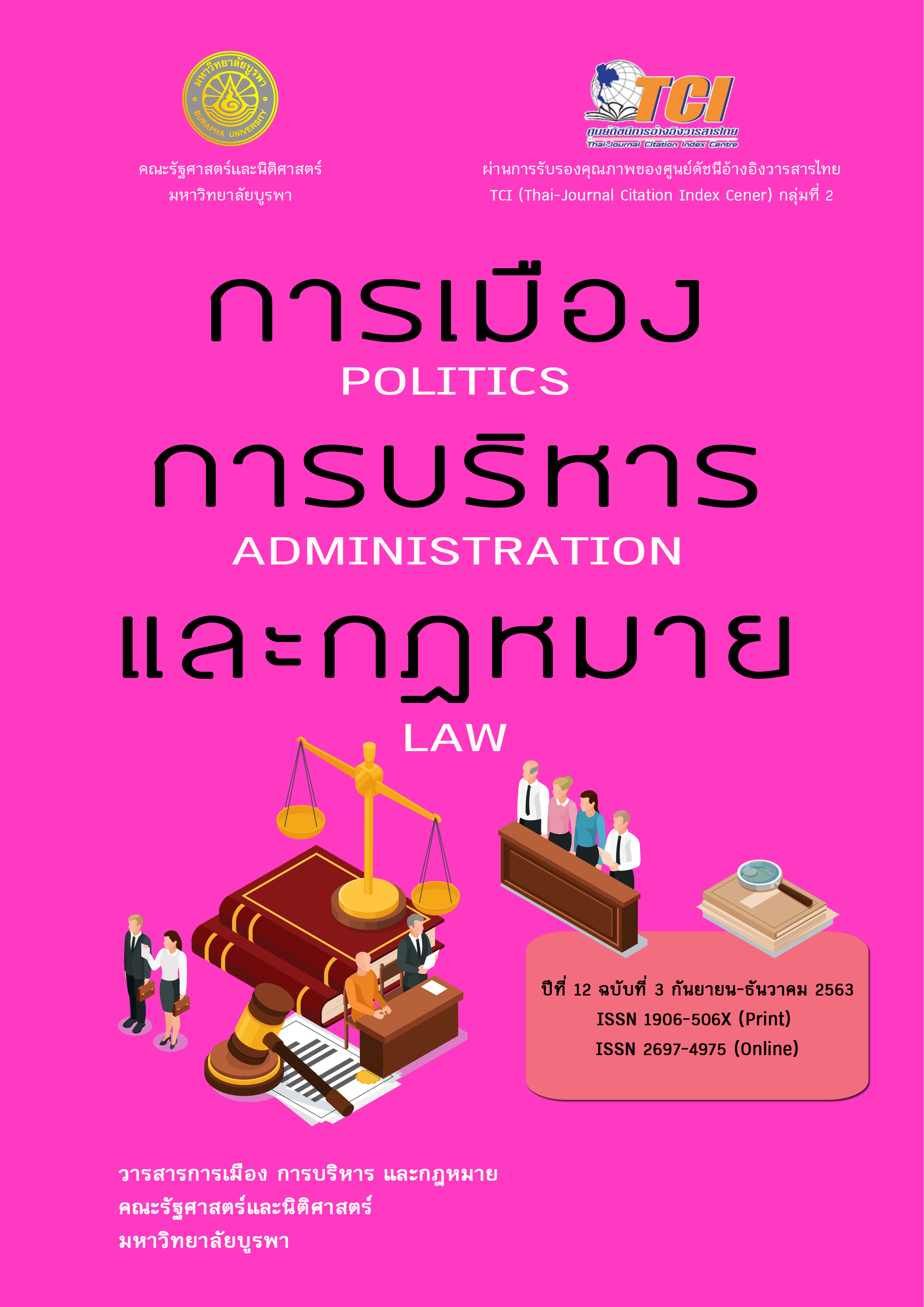Compensation Determination Factors for the Executive Personnel Groups of State Enterprises in Thailand : A Case Study of Group A State Enterprises in Thailand
Keywords:
Executive groups in state enterprises, Compensation Management, Organizational Characteristics, Political RelationshipAbstract
This research aims to find personal characteristic factors of the executive personnel groups (EPGs), by considering the characteristics of an organization, which leads to different compensation determination. The researcher also adds political relationship factor into consideration. The researcher uses the mixed-method research by in-depth interviews with 25 personnel who involve with the compensation determination process of the target group. Questionnaires were used to collect information from 347 employees in state enterprises from level 5 or assistant director level of a department onward. The result shows that 1) State enterprise A is in an industry with a low number of competitors. The form of this industry is considered to be concentrated. The environment of competitiveness for this industry consists of only a handful of big players. At the same time, State enterprise B is in a monopolized business. It is difficult for a new player to enter the market and be competitive with both state enterprises. 2) Accessibility to resources ( = -.327), determined compensation from other players in the market ( = .224), management experience ( = .224), and ability to create changes ( = .135), are the factors that determine compensation differences of the EPGs in State enterprise A. All variables have 30% of predictive efficacy (Adjusted R2 = .300). While executive board ( = -.296), determined compensation from other players in the market ( = -.292), management experience ( = -.249), and ability to create changes ( = .216), are the factors that determine compensation differences of the EPGs in State enterprise B. All variables have 28% of predictive efficacy (Adjusted R2 = .280). 3) Political relationship factors are more influential in recruitment than determined compensation for the EPGs.
References
Becker, G. S. (1964). Human capital: A theoretical and empirical analysis, with special reference to education. New York: Columbia University Press.
Broadsgaard, K. E. (2012). Politics and business group formation in China: The party control. China Quarterly, 211, 624-648.
Cronbach, L. J. (1970). Essentials of Psychological Testing (3rd ed.). New York: Harper & Row.
Chancharat, N., Krishnamurti, C., & Tian, G. G., (2008). When the going gets tough: Board capital and survivial of new economy IPO firms. Retrieved September 7, 2020, from http://ssrn.com/abstract=1253171
Finkelstein, S., Hambrick., D. C., & Cannella A. A. (2009). Strategic leadership: Theory and research on executives, top management teans, and boards. New York: Oxford University Press.
Flamholtz, E., & Lacey, J. (1981). Personal management: Human capital theory and human resource accounting, Los Angeles. CA: Institute of Industrial Relations, UCLA.
Haynes, K. T., & Hillman, A. (2010). The effect of board capital and CEO power on strategic change. Strategic Management Journal, 39, 575-606.
Hillman, A. J., & Dalziel, T. (2003). Board of directors and the firm performance: Integrating agency and resource dependence perspectives. Academy of Management Review, 28(3), 383-396.
Lazear, P. E., & Rosen. S. (1981). Rank-Order Tournaments as Optimum Labor Contracts. American Economic Review, 76(4), 701-705.
Levy, D. L. (2000). Application and limitations of complexity in organization theory and strategy. In handbook of strategic management. Rabin, J., Miller, G.J., & Hildreth, W.B. (Eds.) New York: Oxford University Press.
Lorsuwannarat, T. (2015). Organizational theory: Multi-paradigm perspective. Bangkok: Chatfour Printing.
Mrs. Jiraporn (an alias). (January 17, 2019). interviewed.
Mrs. Ajchara (an alias). (April 21, 2019). interviewed.
Oliver, C. (1991). Strategic responses to institutional processes. The Academy of Management Review, 16(1), 145-179.
Peng, M. W., Sun, S. L., & Markoczy, L. (2015). Human capital and CEO compensation during institutional transitions. Journal of Management Studies, 52, 117-147.
Penrose, E. T. (1959). The theory of the growth of the firm. New York. Wiley.
Pfeffer, J. (2003). Introduction to the classic edition. In Pfeffer, J. & Salancik, G. R., The external control of organizations: Aresource dependence perspective (Classic edition). Stanford, CA: Stanford University Press.
Pfeffer, J. & Salancik, G. R. (1978). The external control of organizations: A resource dependence perspective. Stanford, CA: Stanford University Press.
Porter, M. E. (1985). Competitive Advantage: Creating and Sustaining Superior Performance. New York: Free Press.
Meyer, J., & Rowan, B. (1977). Institutionalized organizations: Formal structure as myth and ceremony. American. Journal of Sociology, 83, 340-363.
Milkovich, G. T., & Newman, J. M.. (2005). Compensation (8th ed.). New York: McGraw-Hill.
Nee, V. (1989). A theory of market transition: from redistribution to market in state socialism. American Sociological Review, 54, 63-81.
Nee, V., & Cao, Y. (2005). Market transition and the firm: institutional change and income inequality in urban China. Management and Organization Review, 1(1), 23-56.
Nee, V., & Opper, S. (2010). Political capital in a market economy. Social Forces, 88, 2105-2132.
Senasu, K., (2013). Strategic compensation management (2nd ed.). Bangkok: National Institute of Development Administration.
State Enterprise Performance Office. (2018). Criterion for state enterprise performance appraisal. Bangkok: State Enterprise Performance Office
Walder, A. G. (2003). Elite opportunity in transitional economies. American Sociological Review, 68, 899-916.
Wannateapsakul, N. (2015). Half state enterprise – Half business unit: Power and influencing for expanding in petroleum industry. Bangkok: Chulalongkorn University Press.






